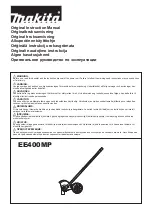
OQ/PQ Operating Instructions
M1393R0
Page 43 of 60
CHAPTER 5
Troubleshooting
5.1
Overview
This section provides troubleshooting information which is related to the OQ/PQ
procedures. More information about instrument specific troubleshooting (e.g. what do if an
instrument performs not within its specifications) is provided in the documentation shipped
with the instruments and in the service manuals available for the instruments.
5.2
Sample and Mobile Phase Considerations
To optimize performance of the system, we recommend that all samples and mobile
phases are free of particulate matter. Samples and mobile phases should be filtered
through a 0.22 µm membrane filter. The filter should be checked to ensure that extractable
materials are not present.
CAUTION
Caution: It is strongly recommend that only bottled HPLC grade water and HPLC grade
solvent be used for these tests. If water from water purification systems is used, polymeric
contamination may seriously damage the flow cell. This is especially true if sample pre-
concentration or 2D separations are performed. This polymeric contamination may also
seriously damage the flow cell (e.g. coating of the capillary walls).
After you have finished using the system, flush the system with a water/methanol or
water/acetonitrile mobile phase before shutting it down.
The solvents must be degassed via the He degassing technique described before. If other
techniques are used (e.g. vacuum degassing) the performance of the system will be
seriously degraded and the performance specifications will not be obtained.
Note: The pump head of the Micropump should be backflushed with iso-propanol/water
(1:1). If crystalline materials are deposited in the pump head, irreversible damage to seals
and or the piston may result; this will dramatically shorten the life of these components.
CAUTION
Caution: Older revisions of the UltiMate system may be equipped with the older type of the
C and D solenoid valves (P/N160051). Due to their limited resistance against strong
organic solvents, do not expose these valves to acetonitrile for a longer period than
required to perform the wash cycle of test 4.8 (e.g. not longer than 4 h).
It is recommended that you perform the wash step separately and to use channel A or B
on such systems. Alternatively, the system can be upgraded with the new valve type (P/N
162297). Refer to Service Information #036 for more details.
















































